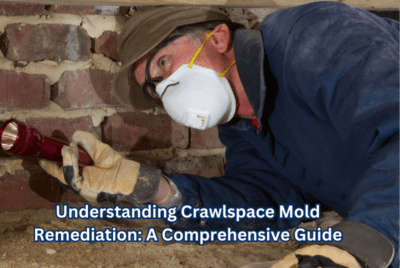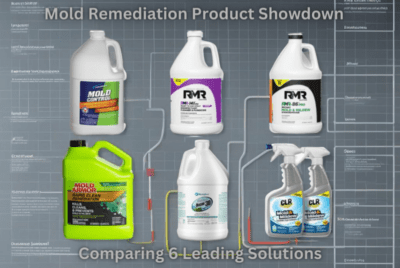How to Clean Mold in the Shower: Your Ultimate Guide
Ah, mold! That dark, stubborn fungus that seems to love your shower just as much as you do. Or even more! Let’s be honest, mold isn’t just an unsightly guest; it’s also an unwelcome health risk. No one wants to start their day scrubbing mold before taking a refreshing shower, right? In this comprehensive guide, I’ll teach you how to clean mold in the shower from A to Z. So, roll up your sleeves and let’s get cleaning!
Why You Should Be Concerned About Mold
Health Risks
The first reason to show mold the exit door is the health implications. Mold spores can produce allergens, irritants, and even toxic substances. Some common health risks include skin rashes, eye irritation, and respiratory issues like asthma attacks. Just think about it—your shower should be your sanctuary, not a health hazard.
Aesthetic Concerns
Besides health, mold ruins the appearance of your shower, giving the impression that you don’t care about cleanliness. You wouldn’t want to explain those embarrassing black spots to your guests, would you?
Identifying Mold in the Shower
Types of Mold You Could Encounter
It’s not always “the blacker, the worse.” You might also encounter pink, green, or even white mold. Knowing what you’re dealing with will help you tailor your cleaning approach. Black mold is the most notorious one, but each type has its own “personality” and needs different handling.
Basic Supplies Needed
Cleaning Solutions
You don’t need to raid a chemical store to get rid of mold. Household items like white vinegar, baking soda, and hydrogen peroxide can often do the job. But hey, if you’re a fan of commercial cleaners, those work too!
Cleaning Tools
- Scrubbing Brushes: Go for brushes with non-abrasive bristles. You want to clean your tiles, not scratch them.
- Sponge: A good, absorbent sponge can help you reach those tricky corners.
- Spray Bottle: For easy application of your chosen cleaning solution.
Protective Measures
Safety Gear
Don your gloves and mask like you’re entering a biohazard zone. Because, technically, you are!
Ventilation
Open windows or turn on the exhaust fan. This is especially important if you’re using strong chemicals.
Preparing the Area
Removing Items
Your shower gels, shampoos, and loofahs need to go. You wouldn’t want them to get contaminated, right?
Pre-treatment
Why not make the mold a little looser before the big fight? Lightly spray the area with water to prepare it for the cleaning agent.
Cleaning Procedures
DIY Solutions
White Vinegar Method
- Fill your spray bottle with white vinegar.
- Spray the moldy area generously.
- Let it sit for 30 minutes.
- Scrub with a brush and rinse.
Do’s and Don’ts of Cleaning Mold with Vinegar
Vinegar is like the Swiss Army knife of household cleaners—versatile but not always the right tool for the job. It’s good for light mold situations but remember to dilute it and never leave it on overnight.
Baking Soda Method
- Make a paste with baking soda and water.
- Apply the paste on the moldy spots.
- Allow it to sit for 15-20 minutes.
- Scrub and rinse.
Commercial Cleaners
If you’re not into DIY, commercial cleaners are your friends. They’re designed to be fast-acting and often require less elbow grease. However, always read and follow the manufacturer’s instructions.
Steps for Cleaning
- Spray the Cleaner: Be generous but avoid oversaturating the area.
- Let It Sit: This allows the cleaner to break down the mold.
- Scrub Away: Use your brush or sponge.
- Rinse: Use clean water to wash off the cleaning agents.
The Vinegar vs. Bleach Debate: What Truly Works on Mold?
You might think bleach is your go-to solution for mold eradication. Think again! Studies by the EPA dispel the popular myth that bleach is a miracle cure for mold. While it may appear effective on non-porous surfaces like tiles or bathtubs, bleach is not designed to penetrate porous materials like wood and drywall where mold spores can lurk. Moreover, bleach has been found to leave behind a level of mold spores, allowing for mold to regrow within days or weeks. On the other hand, vinegar has proven to be more effective at eliminating mold entirely. So, it might be wise to lean more towards vinegar when battling those stubborn mold spots.
Post-cleaning Measures
After you’ve won the battle, you need to ensure the war is over. Wipe the cleaned area with a dry cloth and keep it ventilated to dry it completely. Dampness is a breeding ground for mold.
Maintenance Tips
Daily Routines
Who says a little daily care hurts? After your shower, wipe down the walls and floor to keep them dry and make sure to always run the exhaust fan during and for 15 minutes! This helps to remove excess moisture, a key factor in mold development.
Weekly Tasks
Squeegee Time
Get a good squeegee and use it to remove excess water from tiles and glass.
Mild Cleaning
A mild cleaner can help keep mold at bay. Weekly cleaning can be a lifesaver!
Monthly Checks
Schedule a day every month for mold inspection. The earlier you spot it, the easier it will be to remove.
Applying a Sealer
Sealing your grout is like building a fortress around your castle. It’s your first line of defense against mold.
Checking for Leaks
Water leaks are like open invitations for mold. Regularly check your plumbing to keep mold at bay.
When to Seek Professional Help
Extent of Mold
If you’re dealing with a moldy area larger than 10 square feet, maybe it’s time to call in the experts.
Non-removable Components
If mold has gotten behind tiles or inside walls, DIY won’t cut it. You’ll need professional intervention.
Conclusion
There you have it—a thorough guide on how to clean mold in your shower. Remember, dealing with mold is not just about keeping your bathroom aesthetically pleasing; it’s also about maintaining a healthy living environment. By incorporating these tips and steps into your cleaning routine, you can wave goodbye to mold and hello to a clean, healthy shower space!
Frequently Asked Questions
- What are the health risks of shower mold?
- Respiratory issues, skin irritation, and allergic reactions.
- How often should I clean the shower to prevent mold?
- Daily wiping and weekly cleaning are effective.
- Can I use bleach to clean mold?
- It is effective but can be hazardous. Use in well-ventilated areas.
- What if the mold keeps coming back?
- This could signify a bigger issue requiring professional help.
- Are all molds the same?
- No, different molds require different cleaning approaches.
Feel free to bookmark this page for your future mold-busting endeavors. Happy cleaning!
If you’re interested in further reading about the science and health implications of mold, check out these reputable sources:
- CDC – Health Effects of Mold: This page provides scientific insights into the potential health risks of mold exposure.
- EPA – Mold in Residential Environments: A detailed guide discussing molds, how they grow, and steps for cleaning and controlling it in indoor environments.
- Mold – National Institute of Environmental Health Sciences (NIEHS): This webpage provides information on mold exposure, health effects, prevention, and remediation. It also mentions a study conducted by NIEHS-funded scientists that shows that mold exposure during the first year of life may increase the risk of childhood asthma.
- Standards Needed for Mold Exposure, Testing, and Remediation – IRMI: This webpage discusses the mold litigation explosion, defective construction as the alleged cause of mold growth, the health effects, and the need for standards. It also cites the biblical standard for examining, monitoring, and remediating mold.




